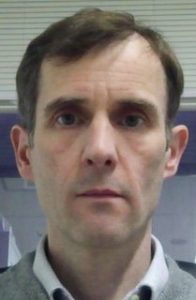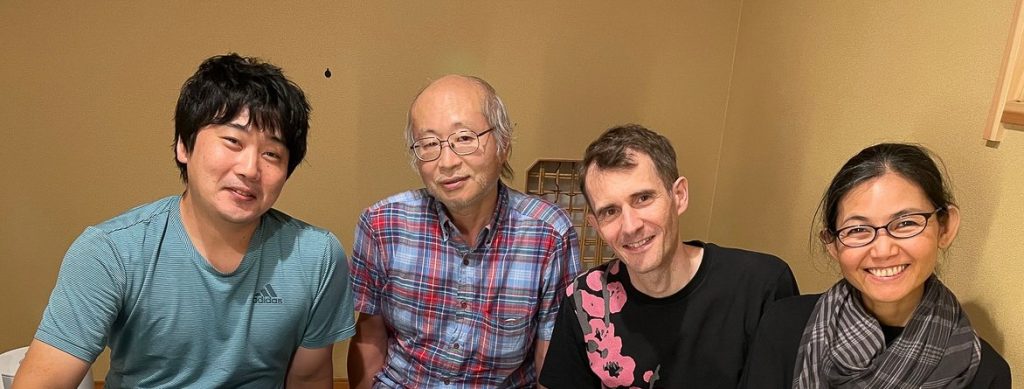ISSP stay report of Associate prof. Ivo Rietveld
Ivo Rietveld
University of Paris / University of Rouen

It has been an honor to have been invited as a visiting professor by the ISSP and the University of Tokyo. The instrumentation in the institute is world class and the organization of my visit was excellent. In particular, the professional help with all the paperwork involved to come to Japan by Yuko Ishiguchi and Ayano Hashiguchi from the international liaison office has been highly appreciated.
I am working as an associate professor in the University of Paris, where I teach physical and inorganic chemistry to students in pharmacy. My research involves the solid-state behavior of pharmaceutical materials for which I closely collaborate with the SMS (Sciences et Méthodes Séparatives) laboratory at the University of Rouen.
For most people drugs are active molecules that interact with a target site in the body to heal a patient or to at least alleviate the symptoms of a sickness. It is easily forgotten that drug formulations need to fulfil stringent regulations as the cure should not be worse than the sickness. These regulations require that a drug formulation needs to be stable for a given period of time (until the expiration date), because degradation of the drug before the expiration date can cause it to lose its therapeutic effect or in the worst case even to become toxic. Drug formulations are designed in such a way that the concentration of a drug in the body of the patient is highly controlled to stay within the two limits of therapeutic effectivity and toxicity. A good example is paracetamol (acetaminophen), which is toxic, but is nonetheless a common drug frequently used for its analgesic and antipyretic effects (painkiller and suppression of fever).
It is therefore extremely important to know and understand the solid-state behavior, solubility, and related bioavailability of the pure drug molecules and on top of that the effects which formulations and the excipients used in the formulations can have on the phase behavior of the active drug component. Thus, Gibbs’s phase theory and thermodynamics are important parts of this field of research.
Although a lot of progress has been made in theoretical prediction of molecular properties, we are still not able to accurately predict the solid-state properties from a molecule alone. This implies that the phase behavior of each drug molecule needs to be investigated very thoroughly in terms of crystal structures, calorimetric behavior, and solubility. Simultaneously computer simulations are carried out to predict possible polymorphs (different crystal structures of the same chemical compound) and their stability hierarchy to be able to assess the stability of the crystal form used in the drug.
It is because the interaction potentials that are used in computer simulations are not accurate enough yet to properly differentiate the stability between different polymorphs that I chose to work with the laboratory of Prof. Yamamuro at ISSP. Their expertise with adiabatic calorimetry -in fact one of the only methods in the world that is able to directly judge the stability hierarchy between crystalline polymorphs- is very important for me to be able to produce data that can be used to improve the interaction potentials for computer simulations and make these simulations more realistic and useful. During my stay, I have come to realize why not many people do adiabatic calorimetry as the method takes a lot of time, skill, and effort and the infrastructure of ISSP with ready availability of liquid nitrogen and liquid helium is a very important asset for this method. The skill and effort were fortunately readily available in the lab of Prof. Yamamuro and I have to express my gratitude for all that has been done for the project by Yamamuro-sensei, Akiba-san and Kunizawa-kun.
Before we could start with the real experiments, a small wire needed to be repaired in the interior of the calorimeter, which meant that the entire apparatus had to be dismantled (there are actually unbelievably many small wires in a calorimeter). Once the equipment was up and running, which may have taken a full month and a half, we have been able to study the phase behavior of benzocaine and valpromide, while a third drug compound is still being measured. The scientific data is in the process of being evaluated, in particular valpromide appears to have a very rich phase behavior that has not been fully elucidated yet. The measurements may be followed by a number of neutron diffraction measurements to look at the role of hydrogen bonding in transitions between polymorphs, but due to the fact that the reactor only recently has been restarted and some unforeseen difficulties arose with the beamlines, we have had to postpone our planned measurements.
In any case, I consider my stay very successful as the obtained experimental results simply do not exist in the realm of the pharmaceutical solid state, while they are very important to improve understanding of the intricacies of crystal structures and their stability behavior. In fact, I will continue collaborating with Prof. Yamamuro and I may be back as soon as I can to learn more about adiabatic calorimetry and for some neutron scattering experiments.

Even though my stay coincided with the Covid-19 epidemic, I have been fortunate to manage to enter Japan with my family in the autumn of 2020 and the epidemic hasn’t had a very large impact on my work or on our stay. With my family, we have been able to visit some interesting temples in Kamakura and Nikko for example and we have also visited the mountains close to Tokyo. Also, the sunsets are sometimes very beautiful seen from the accommodation arranged by ISSP. My family could see those sunsets, I was mostly in the lab.

